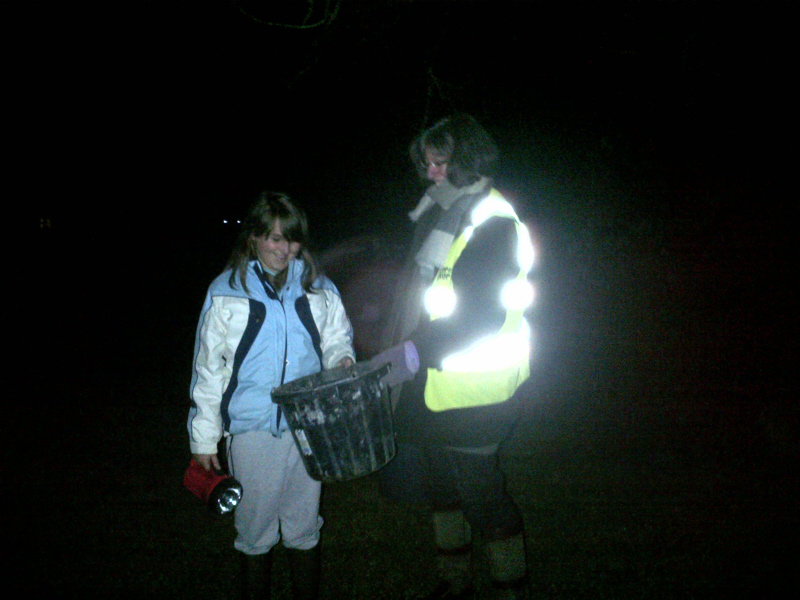
30 Mar Toad Patrol
Toads are beginning to leave their breeding site in the village pond. It is over a month since the first toads arrived from hibernation. Between 8th and 10th March, a dozen or so arrived each evening, slow, lethargic, crossing the small roads that surround our pond. Then warm damp weather on 12 March prompted more arrivals and numbers steadily built over the next two weeks.
The males arrive first and hang around the pond, or in it. The females emerge a few days, or a week, later. They are larger and by the time they are on the move, many already carry a male clinging to their backs. The urge to breed drives them on, across the road. It is the proximity of the pond to the roads that bring out the Toad Patrol.
The toads begin to move at dusk. Quietly they push out from ditches, muddy banks and nearby gardens. The road offers smooth passage and warm puddles but even if the toads take a determined approach, a passing car will flatten them. The Toad Patrol was set up to help keep the roads clear of toads and help the toads reach the pond in safety. We have a rota so each volunteer goes out on one night a week.
This year the first reports came back from 12th March – 242 toads lifted. There is something meditative and soothing about collecting toads. Armed with a bucket and torch we walk slowly around the pond, a breath of night air across our face, a moon casting white light on the pond, sometimes Venus hanging above us like a blessing.
Toads have a bell-like croak and the bucket soon becomes a source of music, chiming with the tawny owls calling in nearby oaks. We walk steadily around the road collecting the toads heading for the pond, diving for them as we hear cars approaching, the torch beam bobbing from left to right, right to left. Some toads freeze in our palm, some wriggle to escape, and some cling tightly in their frenzied desire to breed. Some have to be rescued from the road drains.
Then we head for the pond and kneeling in the damp grass gently release the toads into the still water amongst starwort and water lily leaves. In the torchlight we see them strike out or hang below the surface, perhaps in bemused contemplation at their sudden arrival. Soon the waters are boiling with toads, their squeaky calls underscored by the booming croak of frogs.
And now, it is over. Strings of toad spawn thread through the weed along the pond edges alongside fat clumps of jellied frog spawn. We hope that some will survive predation by carp and pike and that the fishermen who haunt the pond on early mornings won’t clear out too much weed. Toads are on their way back to gardens and fields, to spend the summer hunkered down in damp mud, leaves and woodpiles.
How did we do this year? As the toad patrol stands down and the road signs are removed, we total our nightly counts:
1685 toads were lifted over a three week period of which 77 were recorded as females. 9 frogs and 4 newts were also moved to the pond.
Despite our best efforts, 155 toads were killed by cars of which 17 were females.
Is it worth it? We are challenged by fellow villagers who ask how many toads you need; who suggest that enough will get across. But we know that frog and toad populations are dwindling and we can see the loss on our own roads here in the village. If we have saved 100s of toads from death on the road this year, we have, in some small way perhaps, apologised for our human impact on the natural world.


